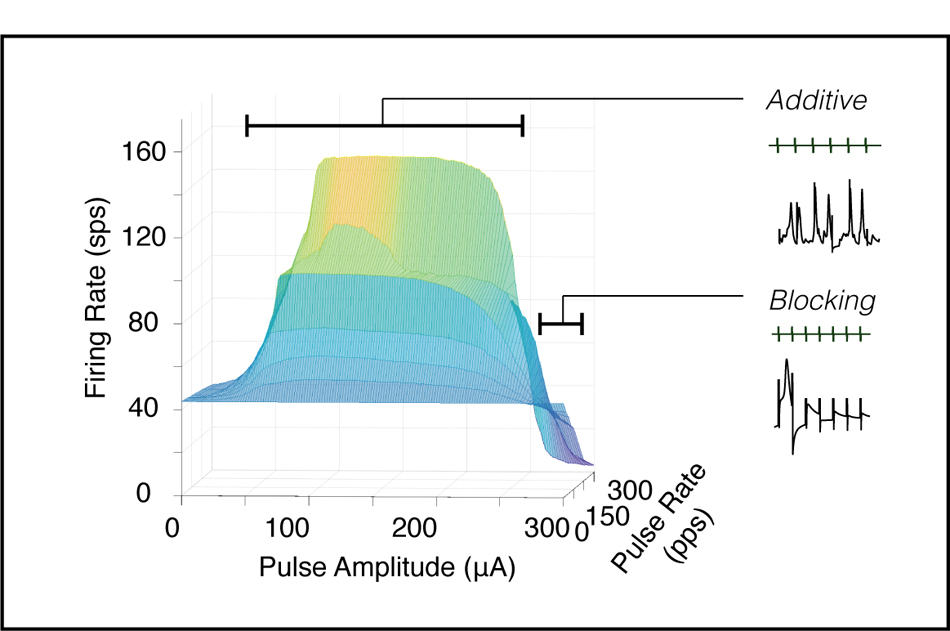The Rules of Pulsatile Stimulation (in Progress)
From initial studies, simulations were made of the vestibular afferent with a biophysical model of the sodium and potassium channels in the irregular vestibular afferent axon. Using this model, we were able to reproduce results from the Mitchell et al. (2016) study of vestibular afferents responding to pulsatile stimulation. Results show that there is less than a linear increase in current amplitude with pulse rate. Pulse amplitude has been thought to have a binary effect of producing one action potential (AP) per pulse above threshold or not below threshold. Instead, we find pulse amplitude has a complex non-linear effect. This effect controlled how often pulses blocked spontaneous APs from occurring or vice versa. With a simple model depended on current amplitude, we were able to produce a linear model that approximates the relationship between pulse rate and firing rate at a given current amplitude.
A longer paper will be out soon with equations and a more detailed model of the range of effects of pulsatile stimulation.
Steinhardt, C. R., Mitchell, D.E., Cullen K.E. & Fridman, G. Y. (2021). Rules of Pulsatile Stimulation (in submission)
Steinhardt, C. R., & Fridman, G. Y. (2020, July). Predicting Response of Spontaneously Firing Afferents to Prosthetic Pulsatile Stimulation. In 2020 42nd Annual International Conference of the IEEE Engineering in Medicine & Biology Society (EMBC) (pp. 2929-2933). IEEE.
